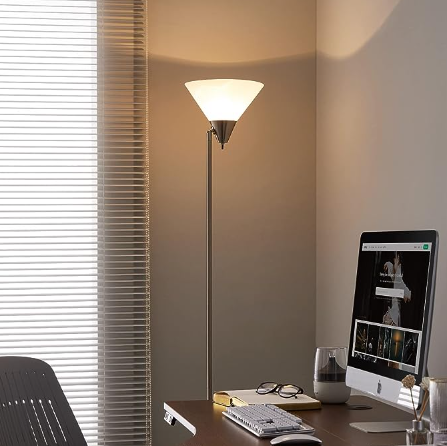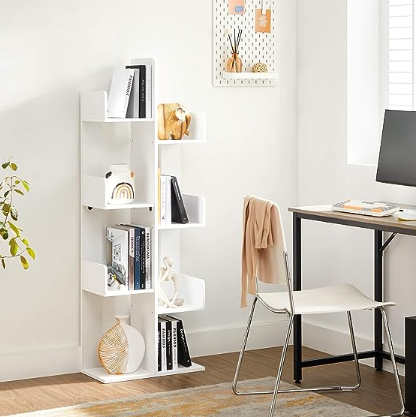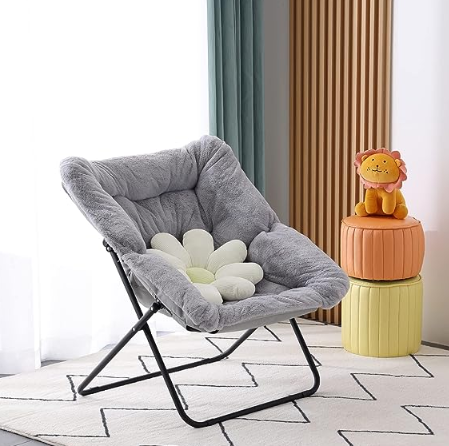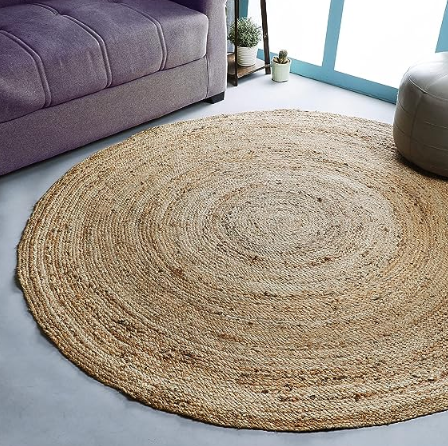10 Carpet Types You Need to Know About Upgrading Your Flooring

Here’s How to Create a Book Corner in Your Home – Big or Small
January 5, 2025
5 Tips for Improving Lighting in Your Home Office
January 8, 2025The right carpet can complete the decoration of the room perfectly. While color, pattern, and size are major considerations, don’t underestimate the importance of carpet material type and weave. When choosing a rug, the textured weave you choose can affect aesthetics, longevity, cost, and care requirements.
We’ve broken down the differences between common weaves to help you understand the terminology and narrow down the types of rugs that fit your space.
Braided
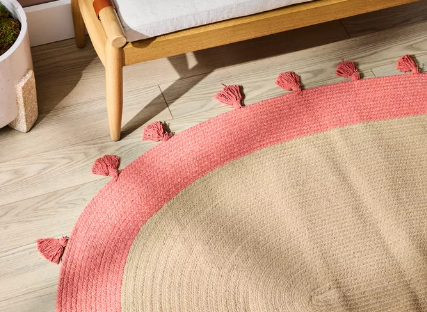
Braided rugs are made by tying strips of cloth together. This weaving process allows you to turn one side of the rug over when it gets dirty. Traditionally, these rugs are made of more casual cotton or warm wool, and vary in thickness and in a variety of patterns and colors.
Textured, eco-friendly braided jute or sisal carpets are popular in modern homes. They are a perfect match for coastal designs, although they are not as durable or soft as wool rugs.
Plain Weave
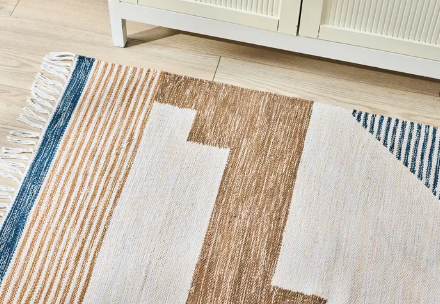
If you want a rug that’s lightweight, easy to maintain, reversible, and elegant, consider choosing a thin-weave plain weave rug.
With no lint, plain carpets are easy to move around the room and easy to transport to a new home, and they’re also great for pets because the thick fibers don’t get tangled in dust and hair. Plain weave rugs are ideal for high-traffic areas, under doors, or heavy furniture because they are thin and don’t leave noticeable dents.
Plain weave rugs come in a variety of patterns (usually geometric or diagonal) and colors, most commonly made with durable, stain-resistant wool. Some popular plain weave rugs include kilim rugs from Turkey and Iran, and Dari rugs from India and Pakistan.
Hand-Hooked
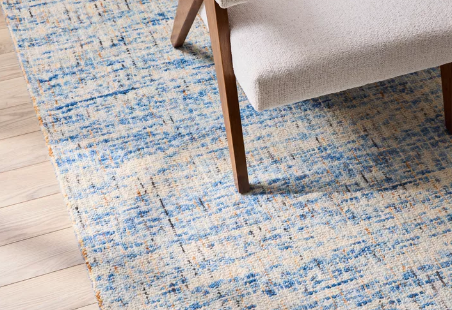
If you’re looking for a hand-hooked rug that’s durable and affordable, consider hand-crocheted rugs. This simple weaving technique involves using a crochet-like tool to pull small fiber loops across a canvas covered with a protective backing, giving it a soft, knotted texture.
Hand-Knotted
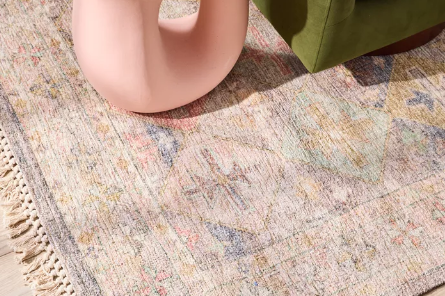
Meticulously woven hand-knotted rugs represent the ultimate in luxury and quality. Thousands of knots are inserted and knotted one by hand to form a detailed pattern.
It takes a lot of skill and time to produce these floor coverings, and they’re often made of wool or silk, meaning they’re often the most expensive type of carpet but can be guaranteed to be long-lasting, one-of-a-kind designs that can become treasured heirlooms.
Hand-Printed
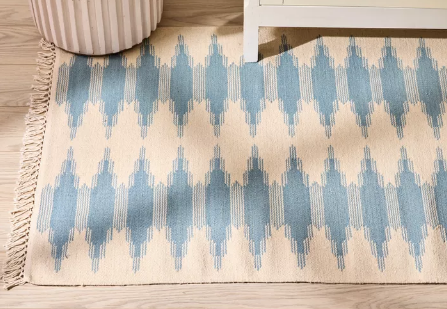
Hand printing is a pattern style traditionally used for hand-woven rugs, but it is often classified separately. This centuries-old artisanal technique uses natural dyes to print intricate patterns on wooden stencils on the surface of carpets. Carpets are usually made of cotton, wool, or silk and then stone-washed to create an antique look.
Hand-printed rugs are expensive due to the time-consuming process, but they are also very durable.
Hand-Loomed
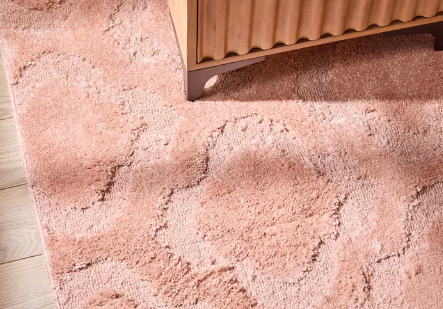
Hand-looming is another ancient carpet weaving technique that requires the operation of a Hand-looming device that interweaves vertical warp and horizontal weft yarns. Operators weave layers of wool or silk by hand to form intricate patterns.
While this is still a process that requires skill and time, using a loom means that carpets can be produced faster than hand-woven carpets. As a result, hand-woven rugs are more affordable while still having a luxurious feel and a long-lasting lifespan.
Hand-Tufted
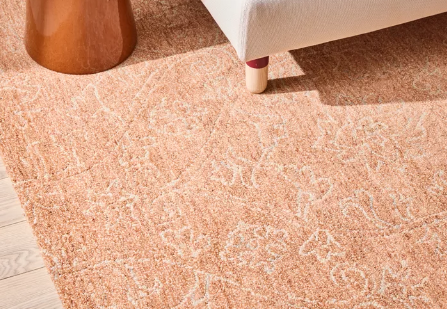
Hand-tufted rugs are another less costly, less labor-intensive alternative to hand-woven rugs. This type of rug is made by spreading canvas on a frame, drawing a pattern, patterning the wool with a tufting gun, and then sealing it with a latex and canvas backing.
Compared to hand-knotted designs, hand-tufted rugs are less intricate in design details and don’t last as long as hand-tufted rugs, but hand-tufted rugs can still present impressive designs and form durable piles.
Machine-Woven
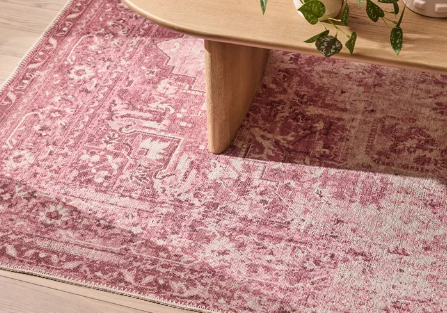
Machine-woven rugs are typically made using electronically controlled powered looms using synthetic fibers such as nylon or polypropylene. Some rugs are made with a mix of fibers, including wool and synthetics.
Machine-woven rugs are a more affordable option, with a wide variety of colors, shapes, and patterns. In addition, woven carpets are tightly woven and made of moisture-wicking synthetic materials, making them easier to clean than some traditional carpets.
Hide
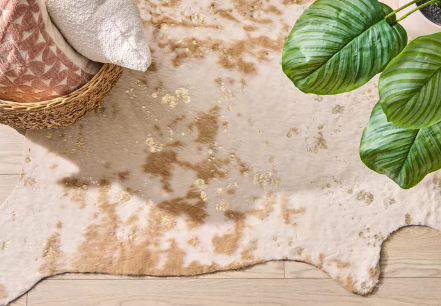
Hide carpets are made from an outer layer of treated animal fur. Cowhide and sheepskin rugs are the most popular, but there are also other varieties of animal skin rugs, such as deerskin or goatskin. You can buy ethically sourced animal skin rugs, but if you want something aesthetically pleasing but don’t use animal materials, you can also buy more affordable faux animal skin rugs.
These rugs with unique shapes and textures add a natural beauty and warmth to a room, and they are known for their durability. Concealed rugs are a popular choice when you put a rug on top of it to add depth to the room.
Shag

Fluffy, funky, long-wool rugs can be hand-woven or machine-woven, made from a variety of materials, and come in a variety of prices. What makes them stand out from the other weaves on this list is that they have loose, loopy, high pile and a soft texture that is pleasant to step on.
Even the best wool carpets don’t work well in high-traffic spaces because their fluff is long, loose and can easily snagged. Plus, you’ll need to vacuum more often – dust can easily get embedded in long yarns.


